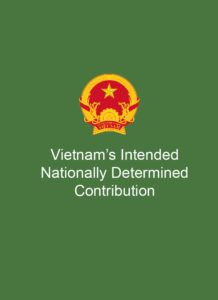State Climate Action
Viet Nam has several action plans and programs related to climate change mitigation and adaptation. Both launched in 2022, the Methane Emission Reduction Action Plan to 2030 and the Action Program on Green Energy Transition and Reduction of Carbon Dioxide and Methane Emissions of the Transport Sectors encourages the reduction of methane emissions and increase of green vehicles. Other than that, the country also has their National Action Program on Sustainable Production and Consumption 2021-2030 to decrease resource and materials used for production sectors, as well as improving and implementing legal policies.
 NDC Document
NDC Document
Source: UNFCCC NDC Registry – Viet Nam
Viet Nam has increased its emissions reduction target from 9% unconditionally and 27% conditionally in 2020 to 15.8% unconditionally and 43.5% conditionally in 2022 in the energy, agriculture, LULUCF, waste, and industrial processes sectors.




